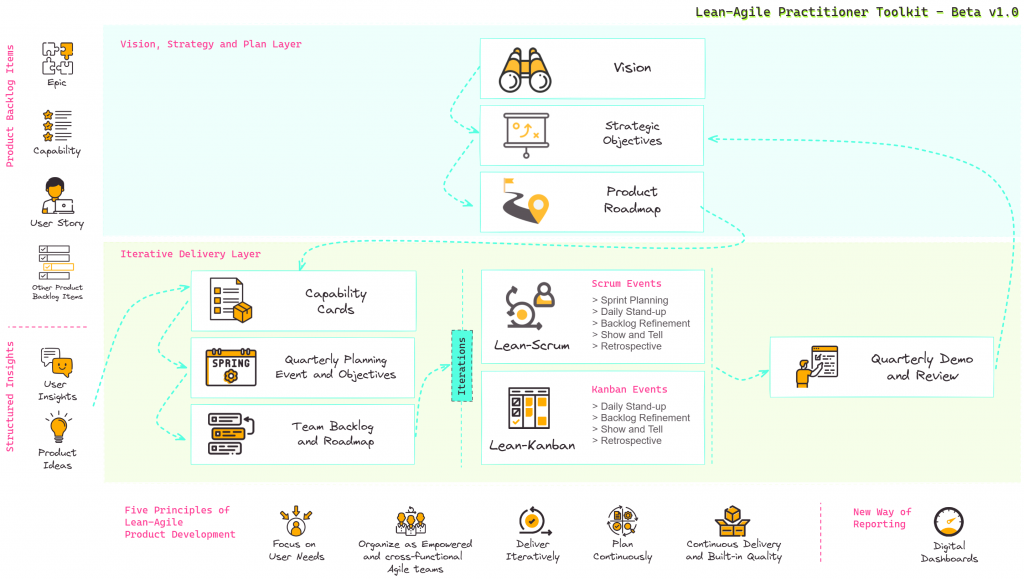Sprint Planning is a collective planning event held at the beginning of each sprint. Here’s what happens:
- Product Owner/Manager sets objectives: The Product Owner/Manager establishes the next sprint’s goals and reminds the team of the Team Roadmap.
- Prioritized Backlog Review: With guidance from the Delivery Manager/Agile Coach, the team collaboratively reviews the prioritized product backlog, one item at a time.
- Backlog Refinement: If the Stories and other backlog items have not been refined at the Backlog Refinement events before the Sprint Planning, then the team also use Sprint Planning event for backlog refinement.
- In-Depth Item Discussion: The relevant team member (Product Owner, Business Analyst, Tech Lead, UX Designer or any other role in the team) clarifies each product backlog item’s content, acceptance criteria, and non-functional requirements (NFRs).
- Collaborative Estimation: Team members discuss the development and testing of each item, ensuring everyone understands their role in delivering the story. Finally, the team collaboratively estimates the relative effort required.
- Sprint backlog: The team reaches consensus on the next sprint backlog through a collaborative planning process by adjusting the backlog items based on the team capacity for the sprint. The Product Owner/Manager has the final say to ensure alignment with product goals.
Duration
1 hour (for a two weeks long Sprint)
Objectives:
- Set objectives for the next sprint (Product Owner/Manager)
- Reviewing backlog items for the next sprint
- Create and refine new backlog items, if needed
- Assess team capacity and commitment for the sprint backlog
Who Attends
- Delivery Manager/Agile Coach (facilitator)
- Product Owner/Manager and Business Analysts
- All Developers
- All User-Centered Design (UCD) team members (User Research and UX/UI)
- Other technical roles (QA)
- Other stakeholders (by invitation)
For an effective Sprint Planning Event
- Prepare Product Backlog Items: Content of the items and stories should be ready beforehand. If possible they should be also refined and estimated during the Backlog Refinement events before the Sprint Planning. However, last-minute information or prioritization changes might occur; the team shouldn’t be afraid to create, adapt and refine stories during the Sprint Planning if needed.
- Inclusive Estimation: Encourage all team members to participate in estimation. However, if someone doesn’t feel like they have enough expertise to estimate specific user stories and backlog items, it’s ok if they don’t estimate.
- Balance New Value and Improvement: Maintain a healthy balance between activities that create new value and those that focus on refactoring or overall process improvement within the sprint backlog.
- Include Discovery & Design backlog items: While the team should review Discovery and Design backlog items, relative size estimation might not be the best approach for sizing these activities. Time-boxing them is a more suitable strategy.


